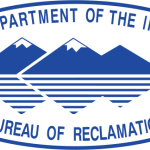- Branche: Government
- Number of terms: 15655
- Number of blossaries: 0
- Company Profile:
A U.S. Department of the Interior agency that oversees water resource management incuding the oversight and operation of numerous diversion, delivery, and storage projects the agency has built throughout the western United States for irrigation, water supply, and attendant hydroelectric power ...
An aquatic fern prohibited in the United States by Federal law. An invasive, rapidly growing plant that covers the surfaces of lakes and streams forming floating mats that shade and crowd out important native plants. Thick mats reduce oxygen content, degrading water quality for fish and other organisms, impeding boating, fishing and swimming, and clogging water intakes for irrigation and electrical generation. The plant spreads aggressively by fragmenting and has oblong floating leaves, 1/2 to 1 1/2 inches long. Young plants have smaller leaves that lie flat on the water surface. As the plant matures and aggregates into mats, leaves fold and compress into upright chains. For more information visit the Giant Salvinia website.
Industry:Engineering
The largest flood that may reasonably be expected to occur at a given point on a stream from the most severe combination of critical meteorologic and hydrologic conditions that are reasonably possible on a particular watershed. This term identifies estimates of hypothetical flood characteristics (peak discharge, volume, and hydrograph shape) that are considered to be the most severe "reasonably possible" at a particular location, based on relatively comprehensive hydrometeorological analyses of critical runoff-producing precipitation (and snowmelt, if pertinent) and hydrologic factors favorable for maximum flood runoff. The maximum runoff condition resulting from the most severe combination of hydrologic and meteorologic conditions that are considered reasonably possible for the drainage basin under study.
Industry:Engineering
Amount of mineral or organic soil material that is in suspension, is being transported, or has been moved from its site of origin. The portion of eroded material that does travel through the drainage network to a downstream measuring or control point. The dry weight of sediment per unit volume of water-sediment mixture in place, or the ratio of the dry weight of sediment to the total weight of water-sediment mixture in a sample or a unit volume of the mixture.
Industry:Engineering
The zone or strip of land along the shoreline between the high and low water marks. That portion of a body of fresh water extending from the shoreline lakeward to the limit of occupancy of rooted plants.
Industry:Engineering
The acreage classified as irrigable for which project works have been constructed and project water is available. This acreage may change from year to year, generally increasing, as project works are completed and service is made available to additional acreage. Upon completion of the project, the irrigable acreage for service will equal the irrigable land as presented in the repayment contract or most recent project authorization. See irrigated acreage. Lands that have not been classified but which are furnished water under Special or Warren Act contracts and lease or water rental agreements are shown as a part of the irrigable area for service.
Industry:Engineering
The capacity of the reservoir, usually in acre-feet. Dam design and reservoir operation utilize reservoir capacity and water surface elevation data. To ensure uniformity in the establishment, use, and publication of these data, the following standard definitions of reservoir capacities shall be used. Reservoir capacity as used here is exclusive of bank storage capacity. See active capacity, active conservation capacity, dead capacity, exclusive flood control capacity, flood control capacity, inactive capacity, joint use capacity, live capacity, and total capacity.
Industry:Engineering
A structure located on or adjacent to a storage or detention dam over or through which surplus or floodwaters which cannot be contained in the allotted storage space are passed, and at diversion dams to bypass flows exceeding those which are turned into the diversion system. Included as part of the spillway would be the intake and/or control structure, discharge channel, terminal structure, and entrance and outlet channels. A spillway that is designed to provide continuous or frequent regulated or unregulated releases from a reservoir without significant damage to either the dam or its appurtenant structures.
Industry:Engineering
A flume with a specially shaped open-channel flow section that may be installed in a drainage lateral or ditch to measure the rate of flow of water. A calibrated device consisting of a broad and flat converging section, a narrow downward sloping throat, and a diverging upward sloping section developed to measure a wide range of flows in an open channel. A calibrated device, based on the principle of critical flow, used to measure the flow of water in open channels. See short-throated flume.
Industry:Engineering
Applying irrigation water below the ground surface either by raising the water table within or near the root zone, or by use of a buried perforated or porous pipe system which discharge directly into the root zone.
Industry:Engineering
That part of the total sediment discharge which is composed of particle sizes finer than those found in appreciable quantities in the bed material, and is determined by available bank and upslope supply rate.
Industry:Engineering
